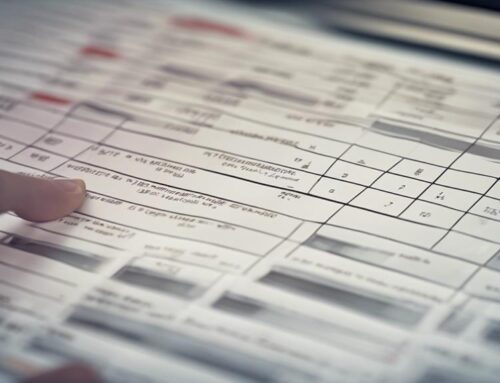When verifying your data, you confirm its accuracy and reliability by employing meticulous validation techniques. Review entries for errors, utilize double-entry verification, and automate validation checks. Cross-verify data from various sources, compare information, and ensure consistency. Maintain integrity through validation methods, regular accuracy checks, and error detection techniques. Analyze processes, minimize errors, and enhance reliability. Use data matching tools, automation, and manual inspection to reconcile data efficiently. Data verification is crucial for accurate decision-making and trustworthy data sources. This quick overview provides insights into key aspects of data verification for your information management processes.
Reviewing Data Accuracy
When confirming the accuracy of data, ensure that each entry is meticulously scrutinized for any discrepancies or errors. Data integrity assessment plays a crucial role in maintaining the quality of information. To prevent errors, employ error prevention strategies such as double-entry verification and automated validation checks. Accuracy verification techniques involve comparing the data against reliable sources or utilizing checksums to detect any anomalies. Conduct a thorough data consistency review to ensure that information is uniform and coherent across different datasets.
In the process of reviewing data accuracy, it is essential to establish standardized procedures for data entry and validation. By implementing validation rules and constraints, you can minimize the occurrence of inaccuracies. Regularly audit the data to identify and rectify any inconsistencies promptly. Utilize tools like data profiling to analyze patterns and outliers that may indicate errors in the dataset. Remember, accuracy is paramount in data analysis, decision-making, and reporting. By adhering to best practices in data verification, you uphold the integrity of your information assets.
Cross-checking Information
To ensure the accuracy and reliability of the data, meticulously cross-checking information from multiple sources is imperative. Utilizing data comparison techniques and information validation processes is essential in this phase. Cross-referencing data involves verifying the consistency and coherence of the information across various platforms or datasets. This method allows for an accuracy assessment by identifying discrepancies, errors, or outliers that may exist within the data.
Implementing robust data comparison techniques involves aligning corresponding data points and ensuring their uniformity. By cross-checking information through different sources, you can validate the accuracy of the data and identify potential inconsistencies that require further investigation. This meticulous process aids in enhancing the reliability of the dataset, thereby fortifying the foundation for subsequent analyses or decision-making processes.
Ensuring Data Validation
To ensure data validation effectively, it is crucial to understand the importance of data accuracy. By providing an overview of different validation methods and error detection techniques, you can enhance the reliability of your data. This approach allows you to systematically validate information with precision and reliability.
Data Accuracy Importance
Ensuring the validation of data accuracy is crucial in maintaining the integrity and reliability of your information. Data integrity assessment and data quality control are essential components of accuracy validation and information verification processes. Without accurate data, decisions can be flawed, leading to potential setbacks and errors in various operations. By implementing thorough accuracy validation procedures, you can minimize the risks associated with incorrect data. Maintaining high standards of data accuracy also enhances the overall quality of your databases and ensures that the information you rely on is dependable. Consistent data accuracy checks are key to upholding the trustworthiness of your data sources and the effectiveness of your decision-making processes.
Validation Methods Overview
Maintaining the integrity and reliability of your information requires a comprehensive understanding of various validation methods to ensure data accuracy. Data quality is paramount in today’s digital landscape. Information validation is the process of ensuring that the data entered meets the required standards and is error-free. Common validation methods include field level validation, which checks individual data fields for accuracy; form level validation, which evaluates entire data entry forms for completeness; and logic-based validation, which verifies data based on predetermined rules. By implementing a combination of these methods, you can enhance the accuracy and reliability of your data. Understanding and applying these validation techniques will help you maintain high data quality standards within your database.
Error Detection Techniques
What techniques can be employed to detect errors and ensure data validation in your information systems? Data cleansing techniques play a crucial role in error detection by identifying and correcting inconsistencies or inaccuracies in the data. By implementing error prevention strategies such as regular data audits and validations, you can maintain data integrity and accuracy. Data integrity checks are essential for ensuring that the data remains consistent and reliable throughout its lifecycle. Additionally, incorporating data quality assurance measures like automated validation processes can help in identifying anomalies and discrepancies promptly. By integrating these error detection techniques into your information systems, you can enhance the overall quality and reliability of your data, ultimately leading to better decision-making processes.
Correcting Errors Efficiently
To correct errors efficiently, identify the source of the mistake promptly. Error prevention strategies and data cleansing techniques are crucial for minimizing mistakes. Once identified, there are two primary approaches to correcting errors: automation solutions and manual correction methods.
Automation solutions involve using software tools to automatically detect and rectify errors in the data. These tools can be programmed to scan for specific types of errors and fix them without human intervention. Automation is especially effective for large datasets where manual correction would be time-consuming.
On the other hand, manual correction methods require human intervention to identify and rectify errors. This approach is best suited for complex errors that automation tools might struggle to correct. While manual correction can be time-consuming, it allows for a more customized approach to fixing errors.
Quality Assurance Processes
You should analyze the effectiveness of process efficiency checks and error detection methods in ensuring data quality. Assessing how these processes function within your organization can provide valuable insights into potential areas for improvement. By systematically evaluating these quality assurance processes, you can enhance the overall accuracy and reliability of your data verification procedures.
Process Efficiency Checks
During quality assurance processes, efficiency checks play a critical role in ensuring the optimal performance of data verification systems. Process improvement is at the core of these checks, aiming to streamline operations and enhance overall productivity. By conducting regular efficiency checks, you can identify bottlenecks, redundancies, or inefficiencies in the data verification process. This proactive approach enables you to make necessary adjustments promptly, leading to smoother operations and higher quality outcomes. Moreover, efficiency checks contribute significantly to maintaining data integrity by minimizing errors and inaccuracies that could potentially compromise the veracity of the information. By focusing on process efficiency, you can enhance the effectiveness of your data verification systems and elevate the overall quality of your data management practices.
Error Detection Methods
Efficient error detection methods are crucial components of quality assurance processes in data verification systems. Data cleansing techniques play a vital role in identifying and rectifying inaccuracies within datasets. By implementing error prevention strategies, such as standardized data entry formats and validation rules, organizations can proactively reduce the occurrence of errors during data processing. Moreover, conducting regular data integrity checks ensures the consistency and accuracy of information stored in databases. Anomaly detection methods are instrumental in flagging unusual patterns or outliers that may indicate errors in the data. By employing a combination of these error detection techniques, companies can enhance the reliability and trustworthiness of their data, ultimately improving decision-making processes and overall operational efficiency.
Data Reconciliation Techniques
Data reconciliation techniques involve comparing and aligning data sets to identify discrepancies and inconsistencies. When it comes to reconciling data, there are several methods and tools at your disposal:
- Data Matching: Utilize data matching techniques to compare records from different sources and identify matching or mismatched data points.
- Reconciliation Tools: Make use of specialized software tools designed for data reconciliation, which can automate the process and highlight inconsistencies efficiently.
- Automated Comparisons: Implement automated comparisons to quickly identify differences between datasets, saving time and reducing human error.
- Manual Inspection: Conduct manual inspections when necessary to delve deeper into discrepancies that automated processes might overlook.
- Version Control: Maintain proper version control to track changes in datasets over time and ensure consistency in reconciling data at different points.
Importance of Data Verification
To ensure the accuracy and reliability of your data, thorough verification processes are essential. Data integrity, which refers to the accuracy and consistency of data throughout its lifecycle, is crucial for making informed decisions. By conducting meticulous information validation, you can identify and rectify any discrepancies or errors in your data. Verification helps in maintaining data integrity by ensuring that the information is complete, accurate, and consistent. It involves cross-checking data from different sources, verifying calculations, and confirming that data meets quality standards.
Data verification is vital for detecting anomalies, preventing data corruption, and enhancing the overall quality of your dataset. It helps in eliminating inaccuracies that could lead to flawed analysis or misguided decisions. Through systematic verification processes, you can enhance data integrity and instill confidence in the reliability of your information. By prioritizing data verification, you establish a foundation of trustworthiness and precision in your data-driven endeavors.
Frequently Asked Questions
What Are Some Common Challenges Faced During the Data Verification Process?
When verifying data, common challenges include ensuring data integrity and detecting errors. The choice between manual and automated verification methods can impact accuracy and efficiency. Emphasize the importance of thorough checks for reliable results.
How Does Data Verification Differ From Data Validation?
Data verification involves confirming the accuracy of data. It ensures that information is consistent and reliable. Data integrity is crucial in this process to maintain quality. Different from validation, verification focuses on the correctness of data.
What Are Some Best Practices for Maintaining Data Accuracy Over Time?
To keep your data accurate over time, you must establish robust data governance practices. Implement continuous monitoring mechanisms and regular audits. Treat your data like a garden, nurturing it with care to ensure its health and vitality.
How Can Organizations Ensure the Security and Privacy of Data During the Verification Process?
To enhance security and privacy, ensure data encryption compliance regulations are met. Implement data masking techniques and stringent access controls. By adhering to these measures, organizations can safeguard sensitive information during the verification process effectively.
What Role Does Technology Play in Improving Data Verification Processes?
To enhance data verification processes, technology plays a crucial role. Automation efficiency streamlines tasks, while machine learning algorithms optimize accuracy. Incorporating these tools enables quicker, more reliable verification, ensuring data security and privacy are maintained effectively.




